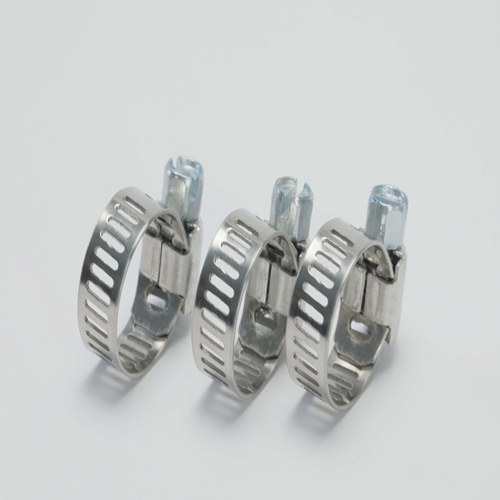- Phone:+86-17331948172 +86-0319-8862898
- E-mail: inquiry@puxingclamp.com
Lap . 19, 2024 12:35 Back to list
Choosing the Right Flexible Hose Clamp for Your Plumbing Needs
Understanding Flexible Hose Clamps A Comprehensive Guide
Flexible hose clamps are essential tools used in a variety of industries, including automotive, plumbing, and manufacturing. These clamps provide a reliable method for securing hoses and tubing to ensure they function properly, resisting leaks and bursts under pressure. Their design and efficiency play a crucial role in maintaining fluid integrity and protecting systems from potential failures.
At their core, flexible hose clamps are designed to grip and hold hoses securely to fittings without damaging the hose material. This makes them particularly valuable in situations where flexible hoses are necessary for transporting liquids or gases. The versatility of these clamps is one of their most significant advantages; they can accommodate a wide range of hose sizes and materials, including rubber, PVC, and silicone.
There are several types of flexible hose clamps available on the market, each catering to specific applications. One of the most common types is the worm gear clamp, which uses a metal band that tightens around the hose when adjusted. This type of clamp is popular because of its ease of installation and ability to create a strong seal. Another type is the spring clamp, which relies on spring tension to hold the hose in place. Spring clamps are often used in automotive applications due to their quick application and removal, allowing for efficient maintenance and repairs.
flexible hose clamp

The materials used in manufacturing flexible hose clamps also vary. Stainless steel is a popular choice due to its durability and resistance to corrosion, making it suitable for outdoor and marine environments. In contrast, plastic clamps may be used in less demanding applications where weight savings are essential, although they may not provide the same level of performance under high pressures or extreme temperatures.
When selecting a flexible hose clamp, it is essential to consider several factors, including the hose material, the operating conditions (such as temperature and pressure), and the surrounding environment. Choosing the wrong type of clamp can lead to leaks, system failures, and potential safety hazards. It is crucial to ensure that the clamp fits snugly without over-tightening, which can damage the hose or the fittings.
Furthermore, regular inspection of hose clamps is vital for ensuring ongoing performance. Over time, clamps can loosen due to vibration or wear, potentially leading to leaks. Routine checks can help identify any issues before they result in significant problems.
In conclusion, flexible hose clamps are critical components in various applications, providing stability and security to hoses and tubing. Understanding their types, materials, and how to select and maintain them is essential for anyone working with fluid transfer systems. By choosing the right clamps and performing regular maintenance, users can ensure their systems operate efficiently and safely. Whether in automotive, plumbing, or other industrial applications, the importance of high-quality flexible hose clamps cannot be overstated.
-
Large Stainless Steel Adjustable Hose Clamp - Hebei Pux Alloy Technology Co., Ltd. | Corrosion Resistance, High Torque
NewsAug.09,2025
-
Large Stainless Steel Adjustable American Type Hose Clamp-Hebei Pux Alloy Technology Co., Ltd.
NewsAug.09,2025
-
Large Stainless Steel Adjustable American Type Hose Clamp-Hebei Pux Alloy Technology Co., Ltd|Corrosion Resistance, Adjustable Design
NewsAug.09,2025
-
Premium Steel Insoles: Puncture-Resistant Foot Protection
NewsAug.09,2025
-
Large Stainless Steel Adjustable American Type Hose Clamp - Hebei Pux Alloy Technology Co., Ltd
NewsAug.09,2025
-
Large Stainless Steel Adjustable American Type Hose Clamp - Hebei Pux Alloy Technology Co., Ltd
NewsAug.08,2025




